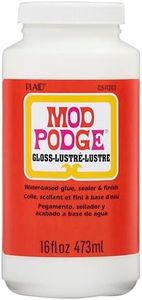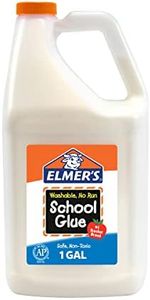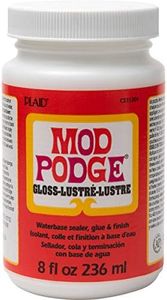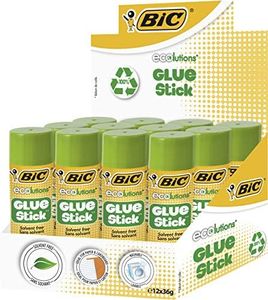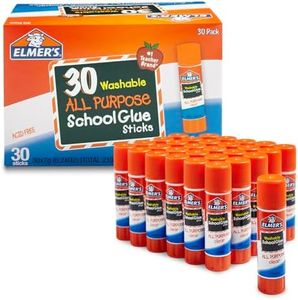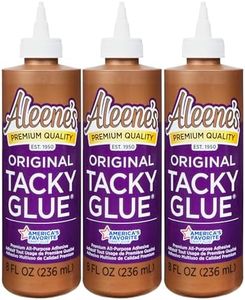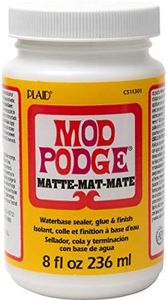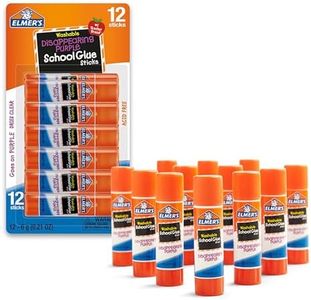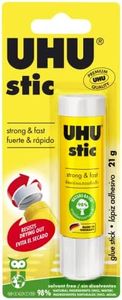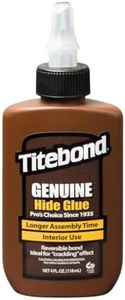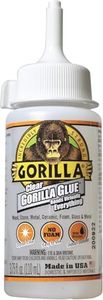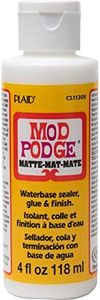We Use CookiesWe use cookies to enhance the security, performance,
functionality and for analytical and promotional activities. By continuing to browse this site you
are agreeing to our privacy policy
10 Best Glue For Cardboard
From leading brands and best sellers available on the web.Buying Guide for the Best Glue For Cardboard
When choosing a glue for cardboard projects, it's essential to think about how you want your pieces to stick together, how quickly you want the glue to dry, and how strong you need the bond to be. Cardboard comes in different thicknesses, so some glues work better for thin pieces, while others are great for heavy-duty work. It's also good to consider how easy it is to use and clean up the glue, as well as whether you need the glue to be safe for kids or have any special qualities, like being clear when dry.Type of GlueThe type of glue refers to the main chemical or base that makes up the adhesive. For cardboard, common options are white glue (like school glue), glue sticks, tacky glue, and hot glue. White glue is versatile, dries clear, and is easy to use, but may take a while to dry and isn't waterproof. Glue sticks are neat for paper-thin cardboard or small craft projects but don't provide a strong bond for thick cardboard. Tacky glue is thicker and provides stronger adhesion, great for heavier or layered projects. Hot glue sets quickly and creates a strong bond but can be messy and is not suitable for young kids due to the heat. Choose the type based on your project—go for hot glue for building structures, white or tacky glue for crafts, and glue sticks for lightweight work.
Drying TimeDrying time is how long it takes for the glue to set and fully hold the cardboard together. Fast-drying glues save time and are helpful if you want to move your project quickly or need pieces to hold without support. However, fast-setting glues give you less time to position your pieces. Slower drying glues let you adjust your pieces but require patience and sometimes clamping or holding in place. If you're doing quick projects, get a faster-drying glue. For detailed or delicate crafts, a slower-drying option gives you more control.
Strength of BondStrength of bond is how securely the glue can hold cardboard together under stress. Light-duty glues are fine for small crafts or decorations, while heavy-duty glues are needed for items that will be handled, moved, or need to hold weight. If your project is just for display or kids' crafts, light to medium bond strength is enough. For boxes, organizers, or models that will be used often, look for strong-bonding adhesives to keep everything together.
Ease of UseEase of use refers to how convenient and simple the glue is to apply and clean up. Glues with nozzles or tips are easier for precision, while squeeze bottles can be messy but cover large areas quickly. Some glues wash off easily with water, making clean-up simple, while others require more effort. If you're crafting with kids, or want less mess, pick a glue known for being easy to control and clean.
Toxicity and SafetyToxicity and safety mean whether the glue has ingredients or fumes that could be harmful if touched or inhaled. Many glues are non-toxic and labeled safe for children, while some heavy-duty or fast-drying glues may have strong chemicals. Always check the safety label if pets or kids are involved, or if you’re working indoors with poor ventilation. Choose non-toxic options for family crafts, and use heavy-duty glues with care and protection if needed.
Finish (Clear or Opaque)The finish of glue describes whether it dries clear or leaves a colored or cloudy mark. Clear-drying glues are ideal for projects where the seams or glue points will be visible, as they keep your work neat. If the glue will be hidden or the appearance doesn't matter, an opaque finish is fine. Consider where the glue will be on your project—choose clear for visible joints and opaque for hidden or painted areas.
